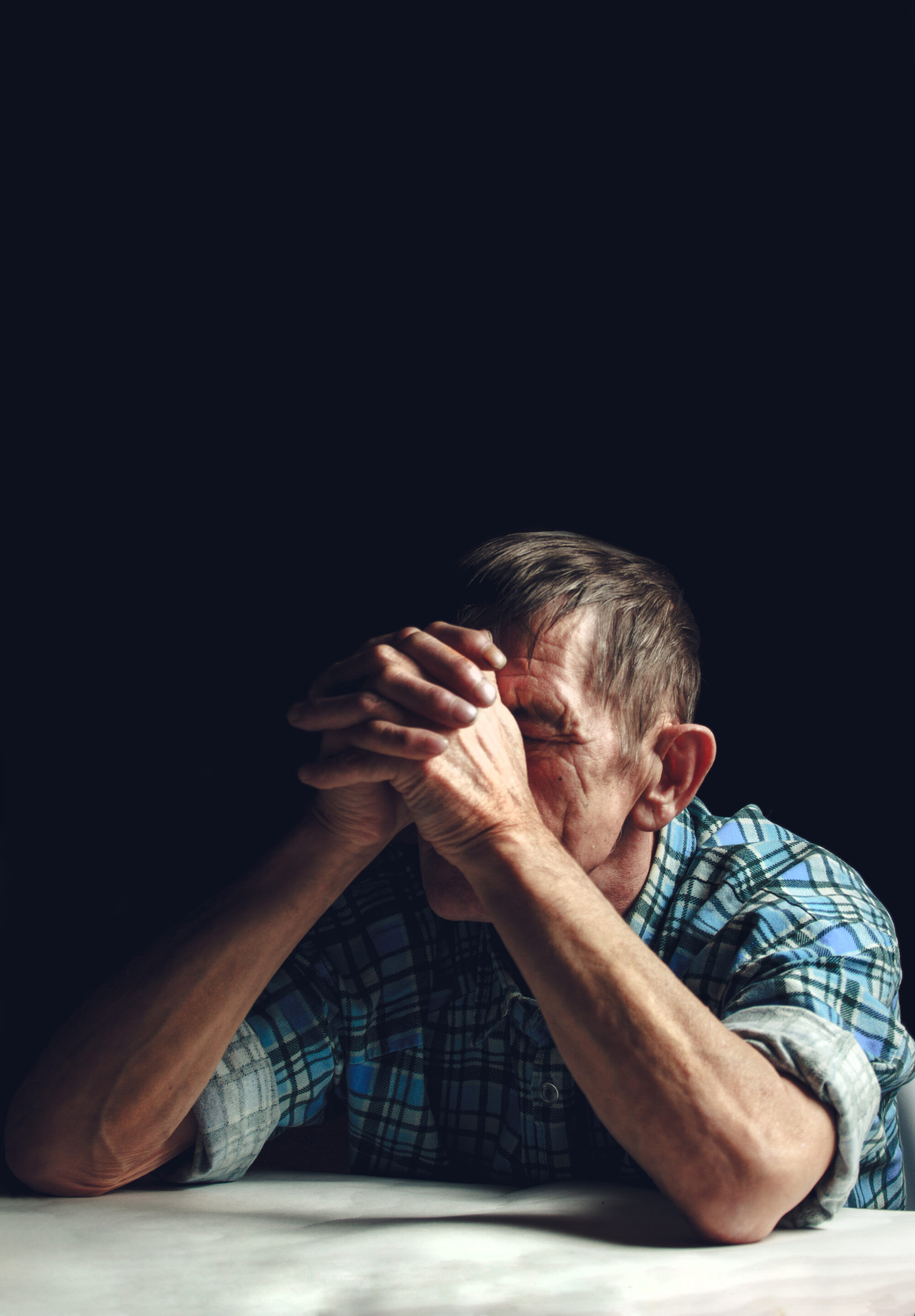Treating Generalized Anxiety disorder
What Is Generalized Anxiety Disorder?
Generalized Anxiety Disorder (GAD) is a common mental health condition that affects millions of people worldwide. It is a chronic disorder that is characterized by persistent and excessive worry and anxiety about everyday things. People with GAD may feel excessively anxious and worried (apprehensive expectation) most of the time, even when there is no obvious reason to be.
This excessive worry can be difficult to control and can interfere with a person’s daily life. Some common worries associated with GAD include health, finances, work, and relationships. People with GAD often feel tense, irritable, and on edge, even when there is no specific reason for it. GAD can also occur along with other mental health conditions, such as depression or substance abuse. However, with the right treatment, people with GAD can learn to manage their symptoms and live full and productive lives.

Struggling with your mental health? We can help.
Causes of Generalized Anxiety Disorder
The causes of GAD are not fully understood, but it is likely that a combination of genetic, environmental, and psychological factors plays a role. Some possible causes of GAD include:
Family history: Research shows that certain genes may increase the risk of developing an anxiety disorder. However, having a family history of anxiety doesn’t necessarily mean that someone will develop an anxiety disorder.
Brain chemistry: Brain chemistry, specifically imbalances in certain brain chemicals, such as serotonin and dopamine, have been linked to GAD.
Trauma or abuse: People who have experienced trauma or abuse may develop GAD as a way of coping with the stress and anxiety caused by their experiences.
Chronic stress: When someone is exposed to chronic stress, it can overwhelm their body’s ability to cope. Their bodies may release excessive amounts of cortisol, leading to the development of GAD.
Symptoms of Generalized Anxiety Disorder
Generalized Anxiety Disorder (GAD) is a condition that affects many people around the world. The symptoms of GAD can vary from person to person, but may include:
Excessive worry and anxiety (apprehension expectation): People with GAD may worry excessively about everyday things and find it difficult to control their worries or keep their worrisome thoughts from interfering with attention to a certain task or objective. This can lead to feelings of helplessness, frustration, and even depression.
Restlessness or feeling on edge: They may also feel restless, tense, or on edge most of the time, which can affect their ability to relax or enjoy activities they once found pleasurable.
Irritability: People with GAD may feel irritable or on edge most of the time, leading to conflicts and misunderstandings which can affect relationships with family, friends, and colleagues.
Fatigue: People with GAD may feel tired and fatigued even when they have not exerted themselves. This can impact their energy levels and ability to perform everyday tasks.
Difficulty concentrating: People with GAD may have difficulty concentrating and may feel easily distracted. This can make it challenging for people to focus on work or other activities.
Muscle tension and aches: People with GAD may experience muscle tension and aches, especially in the neck, shoulders, and back. This can be uncomfortable and even painful, affecting a person’s ability to move freely and enjoy physical activities.
Sleep disturbances: People with GAD may have difficulty falling asleep or staying asleep. This can lead to feelings of exhaustion, restlessness, and irritability during the day.

Struggling with your mental health? We can help.
How Our Luxury Mental Health Facility Treats Generalized Anxiety Disorder
Generalized Anxiety Disorder (GAD) can be treated through various methods. Some of the most common methods include:
Cognitive-behavioral therapy (CBT): CBT helps individuals identify negative thought patterns and behaviors and replace them with positive ones, reducing anxiety levels.
Emotional Schema Therapy (EST): Emotional schema therapy is considered a combination of CBT, attachment theory, and emotionally focused therapy (among others). It is an integrated approach that focuses on an individual’s interpretations, strategies, and responses to their emotions based on early maladaptive patterns (or schemas). It has proven to be an effective and more integral treatment than other therapies in psychological interventions for individuals with generalized anxiety disorder.
Medication: Medication, such as antidepressants and anti-anxiety meds, can effectively regulate brain chemicals that cause anxiety, helping individuals feel calm and relaxed.
Relaxation techniques: Individuals with GAD can use relaxation techniques like deep breathing, meditation, and yoga to reduce anxiety levels, especially if they experience physical symptoms such as rapid heartbeat or shallow breathing.
Exercise: Engaging in regular exercise can effectively decrease anxiety levels, enhance mood, and boost self-esteem and confidence, particularly in individuals with GAD.
Mindfulness practices: Meditation and yoga can help reduce anxiety levels in individuals with GAD who struggle with racing thoughts or focus.
Get Help at Our Anxiety Treatment Centers in California
If you think you may have GAD, it is important to seek help from a mental health professional. They can provide an accurate diagnosis and recommend appropriate treatment options. With the right treatment, people with GAD can learn to manage their symptoms and live full and productive lives.
You’re not alone. Many people struggle with GAD, and there is no shame in seeking help. By taking the first step to get help, you are taking an important step toward improving your mental health and well-being. Get in touch with our Orange County anxiety treatment center today.
FAQs About Generalized Anxiety Disorder
What is Generalized Anxiety Disorder (GAD)?
Generalized Anxiety Disorder (GAD) is a mental health condition characterized by persistent and excessive worry about various aspects of life. People with GAD find it challenging to control their anxiety, which can interfere with daily activities and overall well-being.
What are the common anxiety symptoms of GAD?
Individuals with GAD may experience a range of anxiety symptoms, including persistent worry, restlessness, difficulty concentrating, irritability, and sleep disturbances. These symptoms can vary in intensity and may fluctuate over time.
What physical symptoms are associated with GAD?
GAD can cause various physical symptoms such as muscle aches, tension, headaches, fatigue, and digestive issues like irritable bowel syndrome. These physical symptoms are often the body’s response to prolonged anxiety and stress.
How is GAD diagnosed by mental health professionals?
A mental health professional, such as a psychiatrist, psychologist, or licensed therapist, will conduct a comprehensive assessment to diagnose GAD. This may involve discussing your symptoms, medical history, and any environmental factors that might be contributing to your anxiety.
What are the treatment options for GAD?
Treatment for GAD often involves a combination of therapy and medication. Cognitive-behavioral therapy (CBT) is an effective approach to help individuals understand and manage their anxiety. Anti-anxiety medications, such as anti-anxiety sedative medications or anti-anxiety medication, may also be prescribed to reduce anxiety symptoms.
Can stress management techniques help with GAD?
Yes, stress management techniques such as mindfulness, meditation, exercise, and deep-breathing exercises can help reduce anxiety symptoms and improve overall mental health. These techniques can be used alongside therapy and medication for better outcomes.
What role do environmental factors play in GAD?
Environmental factors such as trauma, chronic stress, and significant life changes can contribute to the development and exacerbation of GAD. Understanding these factors can help mental health professionals develop a more effective treatment plan.
Is GAD related to other anxiety disorders?
Yes, GAD can coexist with other anxiety disorders such as obsessive-compulsive disorder (OCD) and panic disorder. It is essential to address all co-occurring mental health disorders to ensure comprehensive treatment.
How can a support group help individuals with GAD?
Joining a support group can provide individuals with GAD a sense of community and understanding. Sharing experiences and coping strategies with others who have similar challenges can be beneficial for managing anxiety symptoms.
How do brain and biological processes affect GAD?
Brain and biological processes, including neurotransmitter imbalances and genetic predispositions, can play a significant role in the development of GAD. Understanding these processes can help mental health providers tailor treatment approaches to individual needs.
What is the difference between GAD and other mental health conditions?
While GAD is characterized by chronic, excessive worry, other mental health conditions have distinct symptoms and patterns. For example, depression involves persistent feelings of sadness and hopelessness, while OCD involves repetitive behaviors or thoughts. Accurate diagnosis by a mental health professional is crucial for effective treatment.
How can I get help for GAD?
If you or a loved one is struggling with GAD, seeking help from a mental health provider is the first step. A mental health professional can provide a proper diagnosis and develop a personalized treatment plan to address your specific needs.
Sources:
American Psychiatric Association. (2022). Diagnostic and statistical manual of mental disorders (5th ed., text rev.).
National Institute of Mental Health (2022). Generalized Anxiety Disorder: When Worry Gets Out of Control.
Anxiety and Depression Association of America. (2022). Generalized Anxiety Disorder (GAD).
Khaleghi, M., Leahy, R. L., Akbari, E., Mohammadkhani, S., Hasani, J., & Tayyebi, A. (2017). Emotional schema therapy for generalized anxiety disorder: a single-subject design. International Journal of Cognitive Therapy, 10(4), 269-282.

